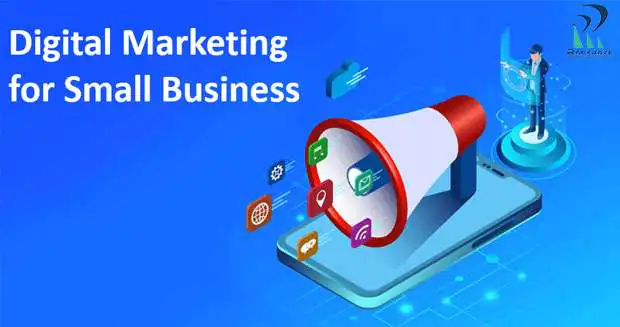Flutter is a mobile app development SDK that allows you to create high-quality, cross-platform apps with a single codebase.
In this guide, we’ll show you everything you need to know about Flutter mobile app development – from the basics of the SDK to advanced tips and tricks. By the end of this guide, you’ll be ready to start developing your Flutter apps!
Why Flutter?
With the launch of the iOS App Store and Android Market, the Mobile App Development landscape has changed dramatically. Now, there are more than 1.8 million apps available on the App Store and nearly 3.48 million apps available on the Play Store.
With so many apps available, it can be hard to stand out from the crowd. This is where Flutter comes in.
Flutter is an open-source mobile app development framework created by Google. It is used to develop applications for Android, iOS, Windows, Mac, Linux, Google Fuchsia, and the web.
The apps created using Flutter are written in the Dart programming language and make use of the Flutter framework, which includes a material Design-inspired set of widgets and a rich set of APIs.
The Flutter apps are fast and responsive.
The mobile apps created using Flutter can be deployed to app stores or used as a standalone app.
Flutter has a wide range of features, including a rich set of widgets, animation support, and a declarative approach to app development.
And above all, Flutter is constantly being improved and updated by Google.
5 key features of Flutter
- Unlike any other framework, Flutter gives developers the power to design highly responsive, fluid user interfaces that run smoothly on any platform, including phones, tablets, and web browsers.
- With Flutter’s expansive widget catalog and easy-to-use animation features, developers can create beautiful, interactive user interfaces for their apps with minimal effort.
- Since Flutter compiles code ahead of time, apps built with Flutter are very fast and responsive.
- Flutter’s hot-reload feature helps developers quickly and easily iterate on their code while making changes to the app’s UI.
- Flutter provides developers with a rich set of tools and libraries that they can use to build robust and scalable apps.
Apps developed using Flutter are better than other mobile app development frameworks: why?

If you’re looking for a great mobile app development framework, you can’t go wrong with Flutter. Here’s why:
Flutter is fast. Really fast. With Flutter, you can develop your apps at breakneck speed thanks to its hot reload feature.
Flutter is cross-platform. This means that you can develop your apps for both iOS and Android using the same codebase.
Flutter apps are smooth and responsive. Thanks to its use of the Dart programming language, the Flutter app can run smoothly on both old and new devices.
If you’re looking for a top-quality mobile app development framework, Flutter is the way to go.
Development Workflow with Flutter
Flutter is a mobile development SDK for building high-performance, mobile-first applications. It offers a simple, intuitive development experience based on the Material Design Guidelines.
The Flutter development workflow is as follows:
Create a new Flutter project
Flutter provides a simple project creation wizard that helps you create a new Flutter project.
To create a new Flutter project, follow these steps:
- In the Flutter app, select File > New > Project.
- On the New Project dialog, enter the project name and click Next.
- On the Project type dialog, select Flutter as the project type.
- On the next dialog, select a template to create your project.
- Click the Create button.
- Your new Flutter project will be created and ready to use.
Add a Flutter widget
Adding a flutter widget is easy. Add a Flutter widget to your project by following the guidelines given below,
- Add the flutter package
First, add the flutter package to your project.
import ‘package:flutter/material.dart’;
- Create a widget
Next, create a widget. In this example, we will create a simple text widget.
class TextWidget extends StatelessWidget { final Text text; TextWidget(this.text); @override Widget build(BuildContext context) { return new Text(context.getText(), context.getFont()); } }
- Add the widget to your layout
Next, add the widget to your layout. In this example, we will add the widget to the main screen.
mainScreen.add(TextWidget.builder(text)).build();
- Run the app
Finally, add the following code to your main.dart file:
import ‘package:flutter/material.dart’;
import ‘package:myapp/my_widget.dart’;
void main() => runApp(MyApp());
Build mobile apps using Flutter: an ultimate guide

There are a few ways to build mobile apps using Flutter. The most common way is to use a code editor, like Android Studio or Visual Studio Code, and a simulator, like the Android Emulator or Xcode Simulator, to develop and test your app. However, you can also use a physical device, like an iPhone or iPad, to test your app.
If you’re new to Mobile App Development, we recommend you follow the Flutter Goe t Started guide. This guide will take you through the process of creating a simple app with Flutter.
Although, building a mobile app using Flutter is a relatively easy task. All you need is a computer, a text editor, and a mobile device. You can use any text editor, but we recommend using Visual Studio Code. Once you have all of that setup, you’re ready to start building your app.
There are two ways to build a mobile app using Flutter. The first is to use Flutter’s built-in widgets. The second is to use a platform-specific widget. We recommend using the built-in widgets because they’re more flexible and easier to use.
Well-known apps created using Flutter
If you’re looking for inspiration for your next Flutter project, check out this list of well-known apps that were created using Flutter. From major companies like Google and Alibaba to small start-ups, Flutter is being used by developers all over the world to create beautiful, fast, and natively-compiled apps.
- Google Ads
- Google Pay
- Alibaba
- Reflectly
- Birch Finance
- Hamilton Music
- Buildly
- Coach Alba
- Readdle
- Hookle
- Seek
These are just a few of the many apps that have been created with Flutter. So, if you’re feeling stuck or uncertain about what to make next, take a look at this list and see if anything inspires you. With Flutter, the sky’s the limit!
How to manage and test your Flutter apps?
If you are thinking of building a Flutter app, there are a few things you need to know about managing and testing your app. In this section, we will give you a quick rundown of everything you need to know about managing and testing a Flutter app.
With Flutter, you can easily manage your app’s development and testing process. There are a few different ways to do this, but we recommend using the Dart VM and Flutter tooling. This will allow you to easily manage your app’s development process and ensure that your app is running smoothly.
When it comes to testing your Flutter app, there are various ways to test your Flutter app. You can use a simulator or an emulator, or you can test on a real device. Each option has its advantages and disadvantages, so it’s important to choose the right one for your needs.
Simulators and emulators are great for quickly testing your app in different environments. However, they can’t match the performance of a real device. If you’re looking for the most accurate testing possible, you should test on a real device.
Real devices are the best option for testing Flutter apps. They offer the most accurate performance and battery life tests. However, they can be more expensive than simulators and emulators.
No matter which option you choose, testing your Flutter app is an important part of the development process.
How Flutter can benefit businesses
Flutter is a new framework for building mobile apps that provides several benefits for businesses. First, Flutter is very fast and responsive, which can help businesses speed up development and save on costs.
Additionally, Flutter provides a rich set of widgets and APIs that can be used to build beautiful and customized apps. Finally, Flutter apps can be compiled to both iOS and Android, which gives businesses the ability to reach a wider audience.
If you’re thinking about building a mobile app for your business, Flutter is worth considering. With its fast performance, rich set of features, and cross-platform support, Flutter can help you take your business to the next level.
5 Advantages businesses get using Flutter
- Flutter is a fast, efficient mobile development platform that makes developing mobile apps faster and easier.
- Flutter offers businesses a more user-friendly mobile development platform that can be used to create apps that are more engaging and user-friendly.
- Flutter can be used to develop apps that are more secure and reliable, making them more resilient to attacks.
- Flutter can also be used to create apps that are more visually appealing, making them more appealing to users.
- Finally, Flutter can be used to develop apps that are faster to launch, making them more responsive to customer needs.
Case Studies of How Flutter Has Benefited Businesses
Since its launch in 2017, Flutter has quickly become one of the most popular frameworks for building cross-platform applications. And for good reason – Flutter offers a number of benefits that make it perfect for businesses of all sizes.
Let’s see how Flutter has benefited businesses with two case studies
The first case study is of a company called Reflectly. Reflectly is an AI-powered journal app that helps people manage their mental health. The app was built using Flutter, and it has been downloaded over 1 million times. Reflectly has been featured in the Google Play Store and the App Store.
Abbey Road Studios is a world-renowned recording studio located in London, England. The studio is perhaps most famous for being the home of The Beatles, who recorded many of their albums there.
In recent years, the studio has been using Flutter to create interactive apps for its clients. The studio has found that Flutter allows them to create apps quickly and easily, without compromising on quality. The apps created with Flutter have been well-received by the studio’s clients, and have helped to boost the studio’s business.
The use of Flutter has been so successful for Abbey Road Studios that the studio is now planning to use Flutter to create an app for the general public
The Power of Flutter: 4 Businesses Who Saw Success After Switching
There’s no denying the power of Flutter – the mobile development framework created by Google. In just a few short years, Flutter has taken the mobile development world by storm. And it’s not just because it’s backed by Google. Flutter is also incredibly easy to use and offers a ton of features that other mobile development frameworks simply don’t have.
But don’t take our word for it. There are plenty of businesses out there that have seen success after making the switch to Flutter.
Let’s see a list of four businesses that saw a major boost in performance after switching to Flutter.
- Airbnb
- Uber
If you’re considering developing your next app using Flutter, you’re in good company. Some of the world’s biggest brands as listed above have made the switch to Flutter, and they’re seeing amazing results.
Conclusion
Flutter mobile app development is a great choice for those looking for a fast and reliable way to develop their app. The ultimate guide to flutter mobile app development provided a wealth of information on the subject. As Flutter continues to grow in popularity, we can expect to see more and more amazing apps being developed with it. So, stay updated with us to learn about the latest developments in the world of Flutter.


































































































